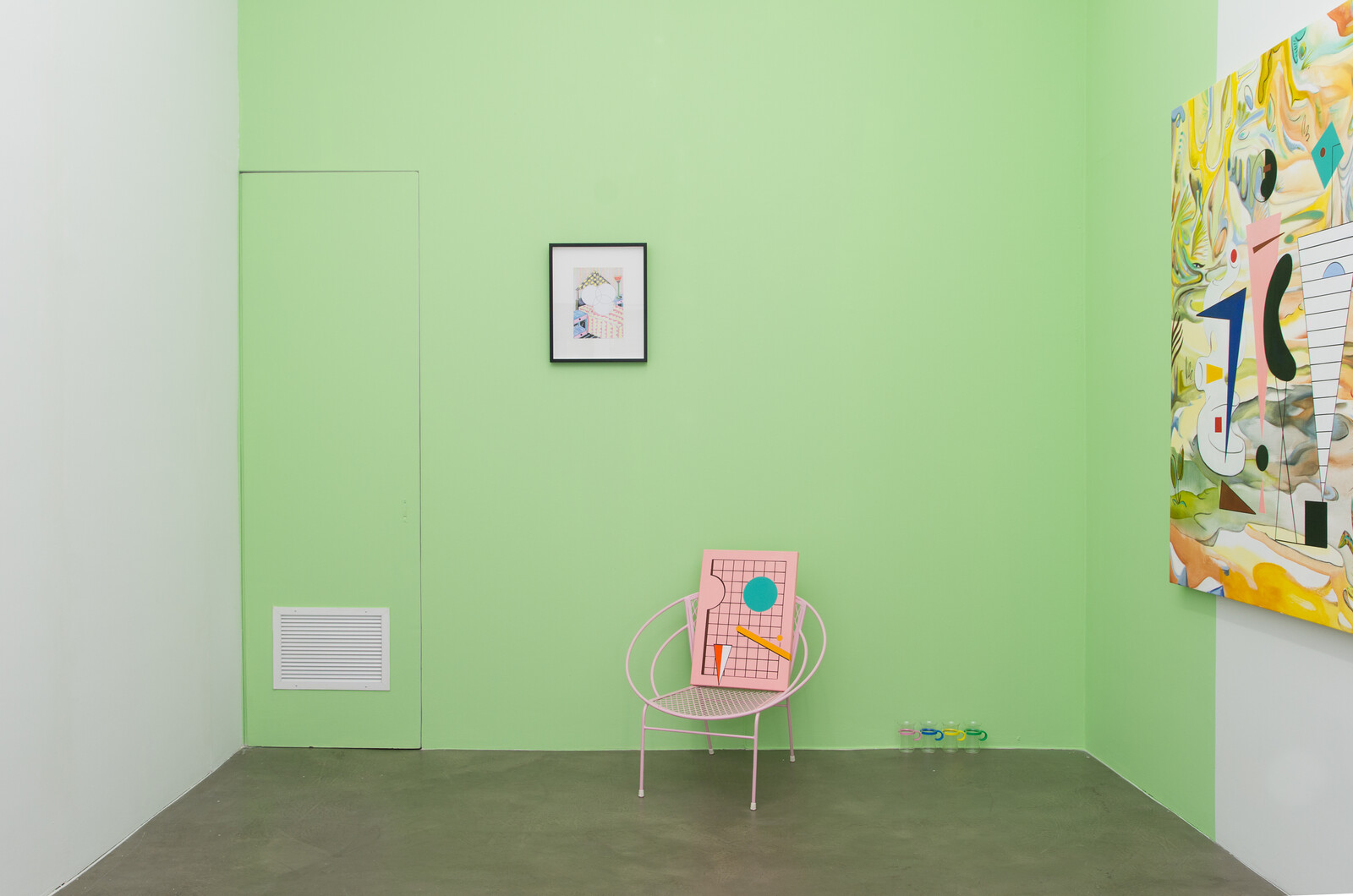Categories
Subjects
Authors
Artists
Venues
Locations
Calendar
Filter
Done
October 15, 2019 – Review
Cristina Tufiño’s “Dancing at the End of the World”
Kim Córdova

Cristina Tufiño’s “Dancing at the End of the World” presents a grouping of drawings and sculptures that probe the violent effects of digital convenience and the gig industry. With pastel-glazed ceramic sculptures that feature anthropomorphized objects, feminine body parts, and cast-off keyboards, Tufiño adopts sex work as a metonym for the exploitative nature of the online economy. With an unsettlingly sweet aesthetic, she wonders about the consequences of using algorithms to mediate the instant gratification of desire on a vast scale.
In Constellation Sunset (Cubetas del Atardecer) (all works 2019), eggshell-blue arms lithely jut at rigor-mortis angles from two buckets filled with baby’s breath—the flower of innocence. A ceramic head of the same color is an eyeless but coiffed witness to the arms, which may be her dismembered limbs, her torso and legs unaccounted for. Peppermint Hippo (5) features two ceramic feet cleaved from an otherwise absent mint-colored femme, tied up with festive ceramic ribbons jamming a shrimp cocktail of long swollen toes over the edge of stripper heels a few sizes too small, highlighting the vulnerability to violence and the physical toll of desire-fulfillment work.
On the opposite wall, Bocaccio, a ceramic relief of a hand emerging from an arm-shaped keyboard …
April 29, 2015 – Review
Ad Minoliti’s “CSH#14_utopía”
Carla Acevedo-Yates

“Queerness is not yet here”—at least according to José Esteban Muñoz, who in his book Cruising Utopia: The Then and There of Queer Futurity (2009) argues that queer aesthetics is fundamentally utopic. The same could be said for much of Ad Minoliti’s work, in which queer exchanges are understood not as acts of performativity between humans but as interactions between non-human forms and things, thus potentially structuring the social parameters of a future yet to come. Minoliti’s practice is concerned with painting as a space of resistance, in which gender-neutral relations manifest in anthropomorphic geometric entities that inhabit the tropes of modernist painting, design, and architecture, and, in doing so, unintentionally echo the all too familiar notion of failure often attached to modernist utopias. Ad Minoliti, formerly Adriana Minoliti (the artist recently started going by “Ad” instead of her full first name in an effort to avoid gender identification, thereby claiming gender neutrality), lives and works in Buenos Aires, where she is the co-founder of PintorAs, a feminist collective of 20 young Argentinian artists.
Inspired by the Case Study Houses (1945–1966), a project conceived to supply affordable and efficient housing to soldiers returning to the U.S. after the war, Minolitti turned …